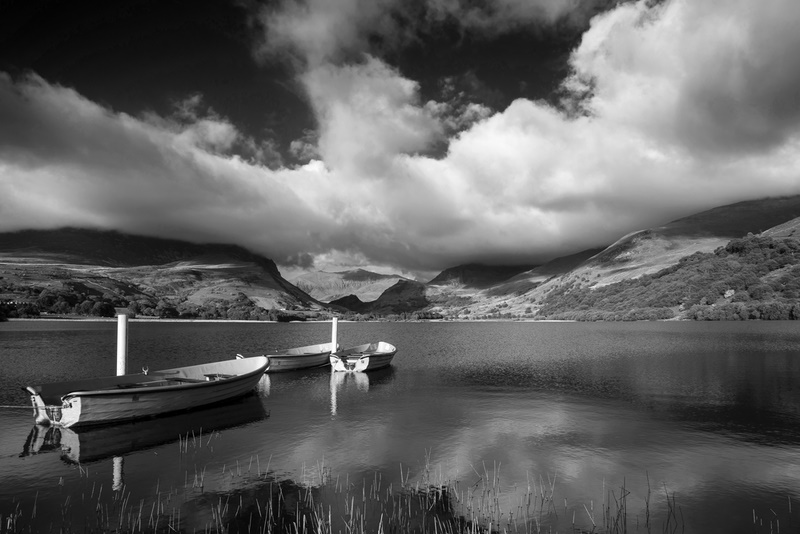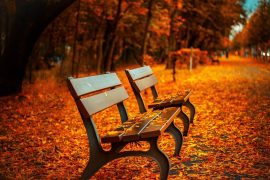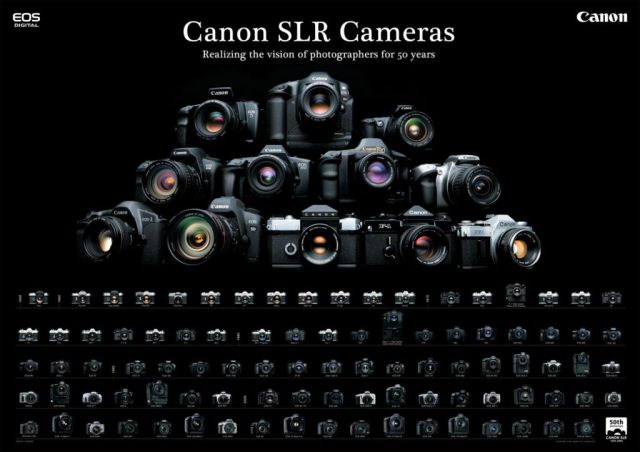Black and white landscape photos have a timeless beauty that never goes out of style. They capture the essence of a scene in a way that color photos simply cannot. The contrast between light and dark, the textures and patterns, and the simplicity of the composition all come together to create a stunning image.
But capturing a great black-and-white landscape photo takes more than just pointing and shooting. It requires a keen eye for composition, an understanding of lighting and contrast, and the ability to edit the photo to bring out its full potential.
That’s where tips and tricks come in. By learning from experienced photographers and experimenting with different techniques, you can take your black-and-white landscape photos to the next level.
Whether you’re a beginner or an experienced photographer, there’s always something new to learn. From choosing the right location and time of day to understanding how to use contrast to create depth and drama, there are countless tips and tricks that can help you capture stunning black-and-white landscape photos.
And once you’ve captured your photo, editing is key to bringing out its full potential. By converting your color photo to black and white and adjusting the contrast and brightness, you can create a truly striking image.
So if you’re interested in photography and want to take your black-and-white landscape photos to the next level, stay tuned for our tips and tricks guide. We’ll cover everything you need to know to capture stunning photos that will stand the test of time.

Photo by Depositphotos
Brief history and evolution of black and white photography
Black and white photography has a rich history that dates back to the early days of photography. In fact, some of the most iconic landscape photos of all time were shot in black and white.
Here are some key moments in the history and evolution of black and white photography:
In the mid-1800s, black-and-white photography was the only option available. Early photographers like William Henry, Fox Talbot, and Louis Daguerre experimented with different techniques to capture images on light-sensitive materials.
In the early 1900s, black and white photography became more popular as cameras became more affordable and portable. Landscape photographers like Ansel Adams and Edward Weston used black and white film to capture stunning images of the natural world.
In the 1960s and 70s, color photography became more popular, but black and white photography continued to have a devoted following. Photographers like Henri Cartier Bresson and Diane Arbus used black and white film to capture the essence of their subjects.
Today, digital cameras have made it easier than ever to shoot in black and white. Many cameras have a black-and-white mode that allows you to see the image in black and white as you shoot.
Despite the rise of color photography, black-and-white photography continues to be a popular choice for landscape photographers. The simplicity of black and white allows the viewer to focus on the composition and the textures of the scene, without the distraction of color.

Photo by Depositphotos
The impact of black and white on landscape photography
Black and white photography has a unique impact on landscape photography. By removing the distraction of color, black-and-white allows the viewer to focus on the composition, textures, and contrast of the scene.
Here are some ways that black and white can enhance your landscape photos:
-
Emphasizes contrast:
Black and white photography is all about contrast. By removing color, you can create a more dramatic image that emphasizes the contrast between light and dark.
-
Brings out textures:
Without the distraction of color, the textures of the landscape become more prominent. This can be especially effective in photos of rocks, trees, and other natural elements.
-
Simplifies the composition:
Black and white photography can help simplify the composition of your photo. By removing color, you can create a more minimalist image that focuses on the essential elements of the scene.
-
Creates a timeless feel:
Black and white photography has a timeless quality that can make your landscape photos feel more classic and enduring.
By understanding the impact of black and white on landscape photography, you can use this technique to create stunning images that stand out from the crowd. Whether you’re shooting with a digital camera or film, black and white can be a powerful tool in your photography arsenal.

Photo by Depositphotos
Tips for Capturing Stunning Black and White Landscape Photos
-
Choose the right gear
Choosing the right gear is essential for capturing stunning black-and-white landscape photos. Here are some tips for selecting the right gear:
- Camera: While any camera can be used for black-and-white landscape photography, a camera with a high resolution and dynamic range can help you capture more detail and texture in your photos. Consider investing in a camera with a full-frame sensor for the best results.
- Lens: A wide-angle lens is ideal for capturing expansive landscapes, while a telephoto lens can help you isolate specific elements in the landscape. Consider investing in a high-quality lens with a wide aperture for the best results.
- Tripod: A sturdy tripod is essential for capturing sharp and steady black-and-white landscape photos. Look for a tripod that is lightweight and easy to carry, but also sturdy enough to support your camera and lens.
- Filters: Filters can be a powerful tool for controlling contrast and enhancing the mood of your black-and-white landscape photos. Consider investing in a polarizing filter to reduce glare and increase contrast, or a neutral density filter to achieve a longer exposure time.
- Accessories: Other accessories, such as a remote shutter release or a cable release, can help you capture sharp and steady photos without touching the camera.
By choosing the right gear for your black-and-white landscape photography, you can set yourself up for success and capture stunning images that capture the beauty and drama of the natural world. And by incorporating these tips and tricks into your photography, you can continue to improve and develop your skills as a photographer.

Photo by Depositphotos
-
Choose the right location and time of day
Choosing the right location and time of day is crucial for capturing stunning black-and-white landscape photos. Here are some tips to help you get the most out of your location and timing:
- Scout out locations ahead of time: Before you head out to shoot, do some research and scouting to find the best locations for your black-and-white landscape photos. Look for areas with interesting textures, patterns, and contrast.
- Consider the time of day: The time of day can have a big impact on the look and feel of your photos. Early morning and late afternoon are often the best times for landscape photography, as the light is softer and more diffused.
- Look for interesting lighting: Lighting is key to creating a striking black-and-white landscape photo. Look for areas where the light is creating interesting shadows and highlights, or where the light is diffused in a way that creates a moody atmosphere.
- Experiment with different angles: Don’t be afraid to get creative with your angles and perspectives. Try shooting from a low angle to emphasize the foreground, or from a high angle to capture the entire scene.
- Be patient: Landscape photography requires patience and persistence. Don’t be afraid to wait for the right moment, whether it’s waiting for the light to change or waiting for the perfect cloud formation.
By choosing the right location and time of day, you can set yourself up for success when it comes to capturing stunning black-and-white landscape photos. And by incorporating these tips and tricks into your photography, you can take your photos to the next level.

Photo by Depositphotos
-
Understanding lighting and contrast
Understanding lighting and contrast is essential for capturing stunning black-and-white landscape photos. Here are some tips to help you master these important elements:
- Look for interesting lighting: Lighting is key to creating a striking black-and-white landscape photo. Look for areas where the light is creating interesting shadows and highlights, or where the light is diffused in a way that creates a moody atmosphere.
- Use contrast to create depth: Contrast is essential for creating depth and drama in your black-and-white landscape photos. Look for areas where there is a strong contrast between light and dark, such as a tree against a bright sky.
- Experiment with exposure: Exposure can have a big impact on the look and feel of your black-and-white landscape photos. Try experimenting with different exposure settings to create different moods and effects.
- Use filters to control contrast: Filters can be a powerful tool for controlling contrast in your black-and-white landscape photos. A polarizing filter can help reduce glare and increase contrast, while a neutral density filter can help you achieve a longer exposure time.
- Pay attention to the direction of light: The direction of light can have a big impact on the look and feel of your black-and-white landscape photos. Side lighting can create interesting shadows and highlights, while backlighting can create a dramatic silhouette effect.
By understanding lighting and contrast, you can take your black-and-white landscape photos to the next level. And by incorporating these tips and tricks into your photography, you can create stunning images that capture the beauty and drama of the natural world.

Photo by Depositphotos
-
Consider the composition techniques
Composition is key to creating a striking black-and-white landscape photo. Here are some composition techniques to help you capture stunning images:
- Use the rule of thirds: The rule of thirds is a classic composition technique that can help you create a balanced and visually pleasing image. Divide your frame into thirds both horizontally and vertically, and place your subject at one of the intersections.
- Look for leading lines: Leading lines can help draw the viewer’s eye into the photo and create a sense of depth. Look for natural lines in the landscape, such as a road or a river, and use them to guide the viewer’s eye.
- Experiment with framing: Framing can help create a sense of depth and add interest to your black-and-white landscape photos. Look for natural frames in the landscape, such as a tree or a rock formation, and use them to frame your subject.
- Pay attention to the foreground: The foreground can be just as important as the background in a black-and-white landscape photo. Look for interesting textures and patterns in the foreground, and use them to add depth and interest to your photo.
- Simplify the composition: Black and white photography is all about simplicity. Look for ways to simplify the composition of your photo, such as by using negative space or eliminating distracting elements.
By incorporating these composition techniques into your black-and-white landscape photography, you can create stunning images that capture the beauty and drama of the natural world. And by experimenting with different techniques and styles, you can develop your own unique voice as a photographer.

Photo by Depositphotos
-
Edit your Black and White Landscape Photos
Editing your black-and-white landscape photos is an essential step in creating stunning images that capture the beauty and drama of the natural world. You may check our post about editing Here. The following points are some tips for editing your black-and-white landscape photos:
- Converting color photos to black and white: Converting your color photos to black and white is the first step in editing your black and white landscape photos. While many photo editing programs have a black-and-white conversion tool, using a dedicated tool can give you more control over the conversion process.
- Adjusting contrast and brightness: Adjusting the contrast and brightness can help bring out the details and textures in your black-and-white landscape photo. Use the levels or curves tool to adjust the contrast and brightness of your photo.
- Enhancing details and textures: Enhancing the details and textures in your black-and-white landscape photo can help create a more dynamic and interesting image. Use the sharpening tool to enhance the details in your photo, and use the noise reduction tool to reduce any noise or graininess.
- Experiment with different filters: Experimenting with different filters can help you create different moods and effects in your black-and-white landscape photos. A red filter can help create a dramatic effect, while a yellow filter can help bring out the details in the sky.
- Use a vignette: Adding a vignette can help draw the viewer’s eye to the center of the photo and create a more dramatic effect. Use the vignette tool to darken the edges of your photo.
By editing your black-and-white landscape photos, you can take your photos to the next level and create stunning images that capture the beauty and drama of the natural world. And by incorporating these tips and tricks into your photography, you can develop your own unique voice as a photographer.
For further information about editing, you can check my editing tutorials, and my YouTube channel there are many tips and tutorials there.

Photo by Depositphotos
-
Showcase your Photos
Once you’ve captured stunning black-and-white landscape photos, it’s time to showcase them to the world. Here are some tips for showcasing your photos and creating a cohesive and impactful portfolio:
- Choosing the right platform for showcasing your photos: There are many platforms available for showcasing your black and white landscape photos, from social media to online galleries. Consider your audience and the type of exposure you want for your photos when choosing a platform.
- Tips for creating a cohesive and impactful portfolio: When creating a portfolio of your black and white landscape photos, it’s important to choose images that work well together and create a cohesive narrative. Here are some tips for creating a portfolio that showcases your best work:
- Choose a theme: Choose a theme for your portfolio, such as a specific location or type of landscape, to create a cohesive narrative.
- Consider the order of your photos: Consider the order of your photos to create a narrative that flows well and tells a story.
- Use captions to provide context: Use captions to provide context for your photos and give viewers a deeper understanding of your work.
By showcasing your black-and-white landscape photos and creating a cohesive and impactful portfolio, you can share your work with the world and gain recognition as a photographer. And by incorporating these tips and tricks into your photography, you can continue to improve and develop your skills as a photographer.

Photo by Depositphotos
-
Study the work of famous photographers
Studying the work of famous black-and-white landscape photographers can be a great way to improve your own photography skills and gain inspiration for your own work.
By analyzing their techniques and approaches, you can gain a deeper understanding of the art of black-and-white photography and develop your own unique voice as a photographer.
So take the time to research and study the work of famous black and white landscape photographers, and see how you can incorporate their techniques into your own work.
There are many famous black-and-white landscape photographers whose work has inspired and influenced generations of photographers. Here are some of the most famous black-and-white landscape photographers:
- Ansel Adams: Ansel Adams is perhaps the most famous black-and-white landscape photographer of all time. His iconic images of the American West are known for their stunning use of light and shadow.

- Edward Weston: Edward Weston was a pioneer of modernist photography and is known for his striking black-and-white images of the natural world.

- Minor White: Minor White was a photographer, teacher, and editor who is known for his spiritual approach to photography and his stunning black-and-white landscape photos.

- Michael Kenna: Michael Kenna is a contemporary black-and-white landscape photographer known for his minimalist approach and stunning images of the natural world.

- Sebastião Salgado: Sebastião Salgado is a Brazilian photographer who is known for his powerful black-and-white images of the natural world and the human condition.

By studying the work of these famous black-and-white landscape photographers, you can gain a deeper understanding of the art of black-and-white photography and develop your own unique voice as a photographer.
Conclusion
Capturing stunning black-and-white landscape photos is a rewarding and fulfilling experience. By following the tips and tricks outlined in this article, you can take your black-and-white landscape photography to the next level. Here’s a quick recap of the tips and tricks we’ve covered:
- Choose the right location and time of day
- Understand lighting and contrast
- Use composition techniques to create striking images
- Edit your photos carefully to enhance their impact
- Showcase your work to the world
Remember, black-and-white photography is all about experimentation and exploration. Don’t be afraid to try new things and push the boundaries of your creativity. With practice and persistence, you can develop your own unique voice as a photographer and create stunning images that capture the beauty and drama of the natural world.
So go out there and explore the beauty of black-and-white photography. Take your camera to new locations, experiment with different techniques, and most importantly, have fun! With these tips and tricks, you’re well on your way to capturing stunning black-and-white landscape photos that will inspire and captivate viewers for years to come.
Related posts
How To Capture Landscape – Your Simple Guide
Different Types Of Landscape Photography
Best Canon Lenses For Landscape – Top 5 You Need To Know
Thanks for reading, I hope you enjoyed the article, in case you have any questions just drop them below & I will be happy to answer you.
The featured photo by Depositphotos
If you enjoy the site, don’t forget to subscribe, we will only inform you when a new article is posted.









Hello Ehab! I just finished reading your article on Black and White Landscape Photos- Tips&Tricks; and I really enjoyed it. My mother is quite a “shutterbug” herself and loves photography. My cousin also is quite a lovely photographer too. I would have to say, there are quite a few photographers in our family.
My grandfather was an old-fashioned photographer, he wasn’t particularly skilled in photography himself, but, he loved to tinker with all kinds of machinery and mechanics, etc. And, tinkering with repairing cameras, and old-fashioned photo equipment interested him a lot of the time. He even designed a little “dark room” in his home office so he could develop negatives the old way too.
My sister actually just recently had her first child, and my cousin came by and took photos of the new baby. She did quite a few very beautiful black-and-white photos and this article made me think of her and the photos she took last week. She’s not professionally trained in photography but, I do believe it’s something that she is thinking of pursuing considering her interest in taking photos. And she does it rather well for someone who hasn’t taken any courses in the study of photography.
My family is always telling her at family events that she should consider taking up photography as a small business she could do on the side to make a little extra pocket money. We had a family event recently actually, and I overheard one of my other cousins telling her some tips and tricks on how she could go about doing this.
Like figuring out what her own personal style of photography is. And taking people’s photos and then not necessarily charging them for it, but, telling them to pay her what they think the photos are worth. Sometimes you’ll get people who will underpay you, other times, people who know the quality of your photos will make sure you are paid well.
But, this way it puts less pressure on her to set a price on her photos, and have to have a tough discussion with someone if they think her photos aren’t necessarily worth what she thinks they may be worth. I thought that was a great tip for someone who’s debating entering into the business of photography as an amateur.
I really enjoyed your article! It gave me a few tips I can pass on to all of my family who enjoy doing photography as a hobby.
Thank you for such an interesting read! 🙂 Excellent article!
-Cal
Thank you for sharing your personal experience with photography and how it relates to the article. It’s great to hear that your sister has a natural talent for photography and that your family is encouraging her to pursue it as a potential side business. The tip about not setting a fixed price for photos and instead letting people pay what they think they’re worth is a clever approach that could work well for someone just starting out. I’m glad you found the article informative and helpful, and I appreciate your positive feedback!
Wow! This is impressive, I love the way the black and white works with the rocks and water together. It gives a rather smoky feel while still making the imagination run with the movement from the water. Photography is just a hobby for me, but I am so inspired by your techniques that I want to try them all.
Thank you so much for your kind words! I’m thrilled to hear that you found the black and white technique I used in the photo impressive and inspiring. Photography is a wonderful hobby that allows us to capture and share the beauty of the world around us. I encourage you to try out different techniques and experiment with your photography. Don’t be afraid to take risks and try new things – that’s how we grow and improve as photographers. If you have any questions or if there’s anything else I can help you with, please don’t hesitate to ask. Thank you for taking the time to leave such a thoughtful comment!
I find that some pictures even personal photgraphs are better viewed in black and white. I like that you included the history of black and white photgraphy, didn’t realize it went back to the mid 1800s. Now while typing this that is how they have some landscape photos of civil war era and battles with Indians photographed. When I take photos espeically with my phone I use the edit option to turn the photos to black and white. After reading your tips, I’m going to try your methods of shooting landscape photos in black and white.
Thank you for your comment! I’m glad to hear that you found the history of black and white photography interesting and that you’re inspired to try shooting landscape photos in black and white using the tips provided in the article. Black and white photography can be a powerful tool for creating mood and emphasizing texture and contrast in an image.
I encourage you to experiment with different techniques and see what kind of results you can achieve. And don’t forget to have fun with it! If you have any questions or if there’s anything else I can help you with, please don’t hesitate to ask. Thank you for taking the time to leave such a thoughtful comment!